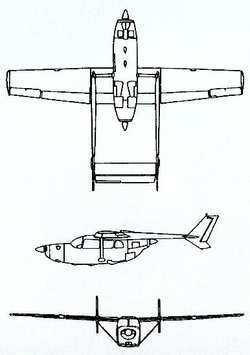Sat, Nov 04, 2006
Blames Pilot's Failure To Address Pitch Control
Malfunction
 The NTSB says a January 2005 crash of a Cessna
337 in Lakeland, FL was likely the result of a pitch
control malfunction. The pilot and a passenger were killed in the
crash.
The NTSB says a January 2005 crash of a Cessna
337 in Lakeland, FL was likely the result of a pitch
control malfunction. The pilot and a passenger were killed in the
crash.
A pre-buy inspection in preparation for its sale revealed no
problems with the aircraft. The new owner had the aircraft ferried
to Florida from California two days prior to the accident -- the
ferry pilot said the trip was "fairly flawless."
During three separate flights the day of the accident a
pilot-rated passenger noted an aggressive pitch-up during take-off
rotation. He noted the pitch trim was set to the proper range. On
the landing prior to the accident flight, the pilot performed a
full-stall landing from an altitude of ten feet.
The pilot requested no inspections or maintenance on the
elevator or pitch trim systems before the accident flight.
On the final take off, a tower controller saw the aircraft pitch
up 30 - 45 degrees before leveling off between 150 - 200 feet. He
said five seconds later the wings began rocking before the aircraft
started descending in a nose and left wing low attitude. The pilot
appeared to make a final attempt to stop the descent before
impacting the runway slightly nose up and left wing low.
Witnesses on the ground reported normal engine sounds from both
engines during the take off.
Post-crash inspections revealed no indication of pre-impact
failure of the primary and secondary flight control cables.
Inspectors found the pitch trim set at four to five degrees nose
down. The aircraft was configured with gear down and flaps at ten
degrees.
Inspectors also carefully examined the pilot's seat finding
evidence the lock pin was engaged at the time of impact. The NTSB
also ruled out problems with weight and balance.
The NTSB concluded the probable cause of the accident as the
pilot's operation of the airplane with known deficiencies in
equipment related to pitch, an abrupt pitch-up during the initial
climb after takeoff for undetermined reasons and the failure of the
pilot to maintain airspeed resulting in inadvertent stall,
uncontrolled descent, and in-flight collision with terrain.
More News
From 2023 (YouTube Version): Legacy of a Titan Robert (Bob) Anderson Hoover was a fighter pilot, test pilot, flight instructor, and air show superstar. More so, Bob Hoover was an i>[...]
Get The Latest in Aviation News NOW on Instagram Are you on Instagram yet? It's been around for a few years, quietly picking up traction mostly thanks to everybody's new obsession >[...]
Aero Linx: B-52H Stratofortress The B-52H Stratofortress is a long-range, heavy bomber that can perform a variety of missions. The bomber is capable of flying at high subsonic spee>[...]
Altimeter Setting The barometric pressure reading used to adjust a pressure altimeter for variations in existing atmospheric pressure or to the standard altimeter setting (29.92).>[...]
"Knowing that we play an active part in bettering people's lives is extremely rewarding. My team and I are very thankful for the opportunity to be here and to help in any way we ca>[...]
 Classic Aero-TV: Remembering Bob Hoover
Classic Aero-TV: Remembering Bob Hoover ANN FAQ: Follow Us On Instagram!
ANN FAQ: Follow Us On Instagram! ANN's Daily Aero-Linx (05.15.24)
ANN's Daily Aero-Linx (05.15.24) ANN's Daily Aero-Term (05.15.24):Altimeter Setting
ANN's Daily Aero-Term (05.15.24):Altimeter Setting Aero-News: Quote of the Day (05.16.24)
Aero-News: Quote of the Day (05.16.24)



